Status Operational Stations 20 | ||
 | ||
Native name 경춘선(京春線)Gyeongchunseon Type Heavy rail, Passenger railCommuter rail, Intercity rail Opened July 20, 1939 (original route)December 21, 2010 (realigned route) Closed December 20, 2010 (original route) Owner Korea Rail Network Authority Locale | ||
Gyeongchun line itx cheongchun train for yongsan
The Gyeongchun Line is a regional rail line between Seoul and Chuncheon operated by Korail. The name of the line is derived from Gyeong (京, meaning the capital, Seoul) and Chuncheon. The line was reconstructed in a new alignment in its entirety in the 2000s. Rail service operates between Sangbong Station on the Jungang Line in eastern Seoul and Chuncheon Station as part of the Seoul Metropolitan Subway system since December 21, 2010. A class of regional rail service named ITX-Cheongchun began operations on February 28, 2012, linking Chuncheon to Cheongnyangni and Yongsan Stations.
Contents
- Gyeongchun line itx cheongchun train for yongsan
- Korail gyeongchun line train leaving chuncheon
- History
- Upgrade
- Services
- Service via the Gyeongui Jungang Line
- References
Korail gyeongchun line train leaving chuncheon
History
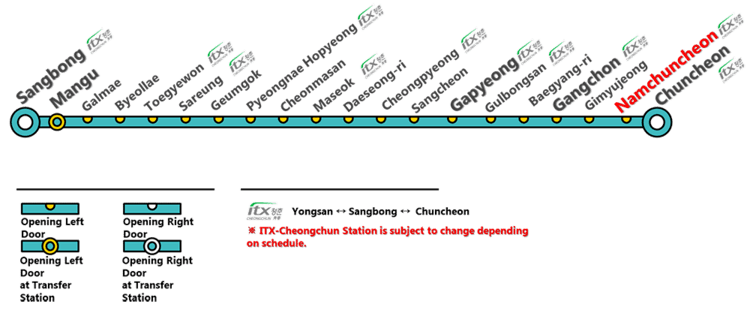
The original Gyeongchun Line was opened along its full length of 87.3 km between Seongbuk Station, on the Gyeongwon Line, to Chuncheon on July 20, 1939. In South Korea, Chuncheon was the most popular destination for students on orientation trips, bringing passengers to the line.
Upgrade
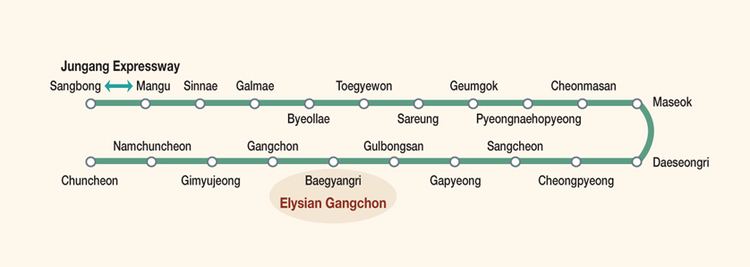
The line was upgraded into an electrified and double-tracked line for 180 km/h (112 mph). Between Geumgok and Chuncheon, from 1997 until 2010, the line was re-laid in a straighter, 64.2 km long alignment with a budget of 2.151,931 billion won. The remaining 17.9 km of the upgraded line was built with a separate budget of 574.124 billion won. Towards Seoul, after Toegyewon Station, this section of the new line diverges from the old alignment that ended in Seongbuk, and connects to the Jungang Line at Mangu Station.
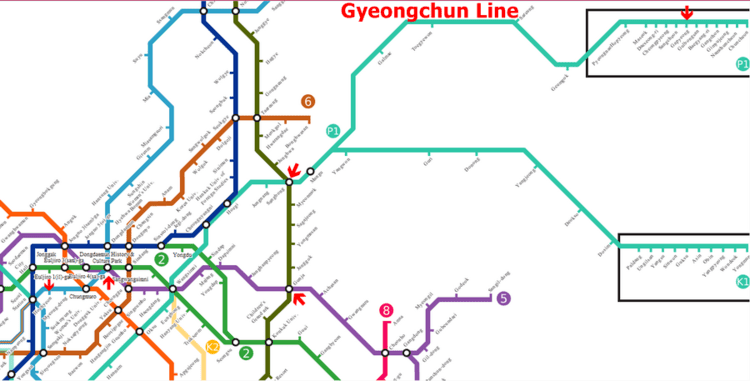
The new alignment was originally planned to be opened in 2004, but completion of the works was delayed for various reasons, including lack of funds. The complete new alignment opened and the old one closed on December 21, 2010.
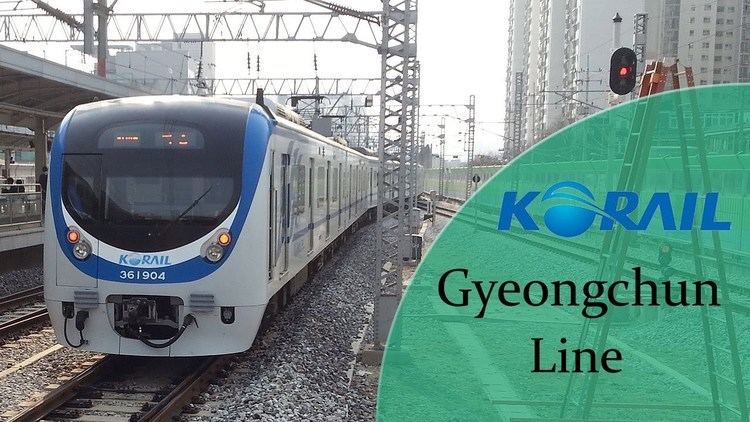
On September 1, 2010, the South Korean government announced a strategic plan to reduce travel times from Seoul to 95% of the country to under 2 hours by 2020. As part of the plan, the Gyeongchun Line is to be further upgraded for 230 km/h and may see KTX service. For the longer term, the government also considers to build a parallel high-speed line that would continue beyond Chuncheon to Sokcho on South Korea's east coast.
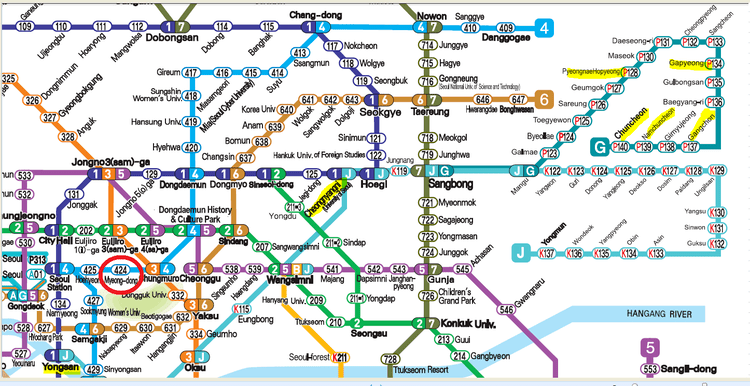
On November 4, 2016, two trains (one in the morning, one in the night) were added to the line. These trains run to and from Kwangwoon University Station, allowing for transfers to Line 1.
On September 26, 2016, the line was extended to Cheongnyangni Station to improve access to regional trains at the station. However, only 10 trains in each direction travel past Sangbong Station; the majority of the trains still terminate at Sangbong Station, and the two special rush-hour trains still run to and from Kwangwoon University Station.
Services
When the new Gyeongchun Line opened on December 21, 2010, passenger service was integrated into the Seoul Metropolitan Subway system, bringing that system from Seoul all the way into Gangwon-do. The new service reduced travel time between Chuncheon and Sangbong in Seoul from two hours to 89 minutes, with different trains operating according to different stopping patterns; and increased capacity five-fold. Compared to the previous Mugunghwa-ho train service on the Gyeongchun Line, fares dropped by half. For the service, Hyundai Rotem supplied Korail with fifteen eight-car Class 361000 EMUs, out of which only 13 remain in service on the line today.
On February 28, 2012, Korail introduced ITX service (Intercity Train EXpress), which uses Class 368000 trains with double-deck cars. From Chuncheon Station, the fastest ITX trains take 52 minutes to Cheongnyangni Station, and 68 minutes to Yongsan Station in Seoul, operating at a maximum speed of 180 km/h (112 mph). The base fare is 9800 won between Chuncheon and Yongsan, currently it has a 30% discount. The express service was phased out along with the advent of the ITX service.
Service via the Gyeongui-Jungang Line
The following stations are along the Gyeongui-Jungang Line.
